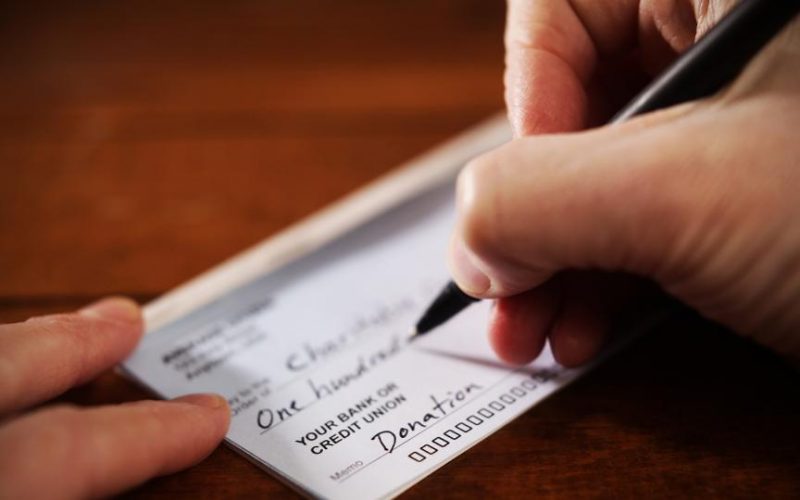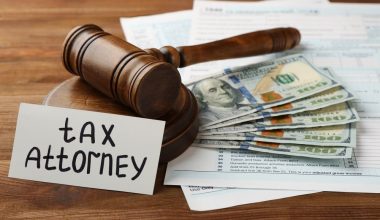Even in today’s digital environment, checks are still common, but they are less popular than they previously were. Paper checks are a cost-effective and efficient way to transfer funds, but you probably don’t write checks every day (or have never done so). Writing a check is simple, and this article will show you how. Use the example above as a model for the checks you need to write, or go through each step one at a time. You can do the procedures in whatever order you like, as long as the final output contains all of the necessary information. You’ll move from the top to the bottom of a check-in in this example, which should help you avoid skipping any steps.
Step-by-Step Guide to Writing a Check
It’s crucial to write a check appropriately. If a check is not properly filled out, it may result in a defaulted payment.
It’s generally simple to transfer money online in the age of mobile payments. However, there are still times and places where only cash or checks are accepted forms of payment. Are you unsure how to write a check? Is it possible that you haven’t used your checkbook in a while? When filling out a check, keep these steps in mind to guarantee that the recipient can cash it.
#1. Write the date
You must write today’s date in the upper right-hand corner of the check. It’s crucial to use the exact date; banks aren’t required to accept cheques that are older than six months. That’s right: in the United States, a collection of laws the Uniform Commercial Code (UCC) governs such specifics.
A check may need to be postdated on occasion. Keep in mind that postdating implies your check will not be able to be cashed until the date specified on the check.
Make sure the month, day, and year are right. If the date is incorrect or illegible, the payee may be unable to cash the check. In that situation, the check will be returned to you by your financial institution.
#2. Include the payee
The words “Pay to the order of” appear on the first line. This is the line on which you should write the name of the person or company who will cash the check.
To deposit the monies into their bank account, the recipient’s name must be on the cheque. Make certain to use their complete name. To ensure that the monies are correctly deposited, write clearly.
#3. Fill in the numerical amount
The words “Pay to the order of” appear on the first line. This is the line on which you should write the name of the person or company who will cash the check.
To deposit the monies into their bank account, the recipient’s name must be on the cheque. Make certain to use their complete name. To ensure that the monies are correctly deposited, write clearly.
#4. Write the numerical amount in letters
A blank line appears just beneath the payee line, with the word “dollars” to the right of it. Fill in the dollar amount of the check-in words on this line.
If your check is for $142.57, the numerical number on the line should say “one hundred forty-two and 57/100,” for example. Even if the dollar number is even, you need to specify “0/100” to ensure that no pennies were accidentally left out.
You may also see the number 100 with a line above it to the right of this line. If your check allows it, you can enter the number of cents here rather than the dollar amount. You can also simply type “00” for an even monetary sum.
5. Clearly sign the check
A blank line can be in the bottom right-hand corner. You must sign the check-in a clear and legible manner.
The cheque cannot be cashed unless the primary account holder’s signature is present on that line. There can be multiple signing authorities on a bank account.
#6. Jot down notes on the memo line
Unless the payee has requested it, filling out the note line on the bottom left-hand side of the check is optional. This field might assist the recipient in keeping track of payments received. You can also use it to keep track of your finances.
Use the memo line to write out the purpose of the check.
#7. Keep track of your checks
If you don’t have another way to track spending, it’s a good idea to record the transaction in your check register once you’ve completed a check. You’ll find a register at the back of your checkbook where you can indicate the purpose of each outgoing check. The check number, the check amount, the payee, and the check date can all be written on the check. This is useful for budgeting and keeping track of incoming and outgoing funds.
You can also track your checks via online banking. Once your checks have been cashed, many banking apps will show you a scanned image of them. These will appear in your account activity.
How Do You Void a Check and Why?
You may need to void a check on occasion. What is the meaning of a voided check? It’s merely a cheque that you’ve completed and then canceled before cashing.
Consider the following situation. You start a new job that requires you to receive your paychecks by direct deposit. The avoided check may be requested by your employer to ensure that they have the correct account number. If you wish to set up periodic electronic payments with a vendor or another employer, you can also send a voided check.
Void a check if you make a mistake when filling it out. If there is a mistake on a check, it is better to invalidate or destroy it.
Cross off the signature line, the dateline, and the small area where the check amount usually goes to make a canceled check. Then put “VOID” across the check-in capital letters to make it useless, meaning no one can change or cash it.
You protect yourself from fraud by voiding the cheque. Make a note of it in your check register once you’ve properly voided the check so you can maintain track.
Do not give a blank check to your employer or anyone else. Anyone can fill out a blank check and cash it incorrectly.
Is It Illegal to Write a Post-Dated Check?
Checks with post-dated dates can be written in most circumstances; however, it is important to check the laws of your state for specific guidance. A check that has been post-dated is a check that has a date that is in the future written on it. If someone is sending payment before the due date or if they don’t have sufficient funds in their account when the check is written, this may be done.
How Do You Write a Check to the IRS?
When you write a check to the IRS, in addition to the standard check information, you’ll need to include a few other pieces of required information on the check as well. You are required to provide your full name and address, a daytime telephone number, your Social Security number or EIN, the tax year, and the number of the associated tax form or notice. You can find the correct address to send the check by consulting the tax form, getting in touch with your tax professional, or calling the IRS.
Can You Deposit a Check at an ATM?
You can deposit checks at certain banks and credit unions using automated teller machines. Find an ATM that accepts checks from your bank, insert your debit card and PIN, and then follow the instructions that appear on the screen to complete the check deposit process. Check with your financial institution or credit union to determine whether or not they support check deposits at ATMs and whether or not they provide step-by-step instructions on how to deposit a check.
How to Order Checks
Directly through your bank, you can order checks for your checking account. You can apply for your checkbooks in person with a teller at your local branch, or you can apply online.
In most circumstances, your bank will take the cost of your checkbooks from your checking account. A third-party check supplier is used by many banks. Checks can be ordered directly from the supplier or through your own financial institution. You’ll also find an information sheet in your checkbook with the contact information you’ll need to reorder in the future.
Balancing Your Checkbook
You can utilize the check register in your checkbook to write checks, spend cash, or deposit money into your checking account. This part of your checkbook is designed to keep track of all of your financial transactions, such as ATM withdrawals, online purchases, debit card payments, and check writing. You can see how much money is coming in and out of your account if you write it all down.
You may protect yourself from spending money that hasn’t shown up or being withdrawn from your bank account by manually logging your transactions, either using an online or physical register. Transactions can take a few days to appear online, and it’s easy to forget about a transaction if you don’t record it right away.
Practical Advice
Most banks and credit unions allow you to complete your banking online, which is potentially safer than mailing or tracking paper checks. However, if you utilize paper checks, there are a few things to keep in mind. To begin, always write with a non-erasable pen, ideally in blue or black ink. Allow no one to add digits to your check by writing out the amount starting at the far left and putting a line after the last digit to prevent it from being added to.
Double-check that you’ve signed your checks correctly, using your full legal name, and that the data is correct. Keep your checkbook as safe as your wallet, don’t leave it lying around, and keep a carbon copy of every check you write. Avoid writing checks for cash, and order checks from your bank on a regular basis to avoid running out of paper checks, especially if you use them frequently.
Can You Write a Check to Yourself?
The answer is that it is entirely within your rights to write a check to yourself. Possibly, you are perplexed as to why you would choose to do this. Taking money out of your bank account or moving it to a different account can also be accomplished by simply writing a check out to yourself. To accomplish this, you must fill up the payee line with your own name. Even though there are other, more time-effective ways to withdraw money from the bank, one alternative is to just write a check out to oneself.
Security Tips Writing a check
Develop the habits below to decrease the chances of fraud hitting your account
#1. Make it permanent
When writing a check, use a pen. Anyone with an eraser can change the amount of your check and the name of the payee if you use a pencil.
#2. No blank checks
Don’t sign a check until you’ve completed the payee’s name and the amount. Bring a pen instead of granting someone unlimited access to your bank account if you’re not sure who to make the check payable to or how much something costs.
#3. Keep checks from growing
Make sure you print the value in a way that prohibits scammers from adding to it when you’re putting in the dollar amount. Drawing a line from the far left border of the area to the last digit is a good way to start. If your check is for $8.15, for example, place the “8” as far to the left as feasible. Then draw a line from the right side of the “5” to the end of the space, or write the numbers so big that they’re difficult to add. If you leave a blank spot, someone may add digits to your cheque, making it $98.15 or $8,159.
#4. Carbon copies
Get checkbooks with carbon copies if you want a paper record of every check you write. A small sheet in those checkbooks contains a copy of every check you write. As a result, you’ll be able to easily see where your money went and what you wrote on each check.
#5. Consistent signature
Many people’s signatures are illegible, and some even sign cheques and credit card slip with amusing drawings. However, using the same signature on a regular basis aids you and your bank in detecting fraud. If a signature does not match, it will be easier for you to prove that you are not liable for the charges.
#6. No “Cash”
Make sure you don’t write a check that is payable in cash. Carrying a signed blank check or a bunch of cash around is just as dangerous. 3 If you need money, use an ATM, buy a stick of gum and earn cashback with your debit card, or just acquire cash from a teller.
#7. Write fewer checks
Although checks aren’t particularly dangerous, there are safer ways to pay for items. There is no paper to get lost or stolen when you make electronic payments. You’re not avoiding technology by utilizing checks because most checks are converted to electronic payments. Because electronic payments are already in a searchable format with a timestamp and the payee’s identity, they’re usually easier to follow. For recurrent payments, use technologies like online bill payment, and for everyday purchasing, use a credit or debit card.
FAQ
What does it mean when someone writes a check out to cash?
A check “made out to cash” literally has the word “cash” in the payee line. This is different from writing one for someone whose first name is Cash and is instead meant to represent either paying an unknown payee or just getting cash in exchange for the check.
Can I write a check out to cash?
Checks made payable to “Cash” rather than the name of a person or business can be cashed just like any other check. Making the check out to cash is convenient if the person writing it doesn’t know who to make the check out to. But this type of check can also pose risks because anyone can cash it.
How do you write 2000 on a check?
Underneath the “Pay to the Order Of” is a line for writing out the payment amount. In this case, you’ll need to write “Two thousand” and then add either no cents.






